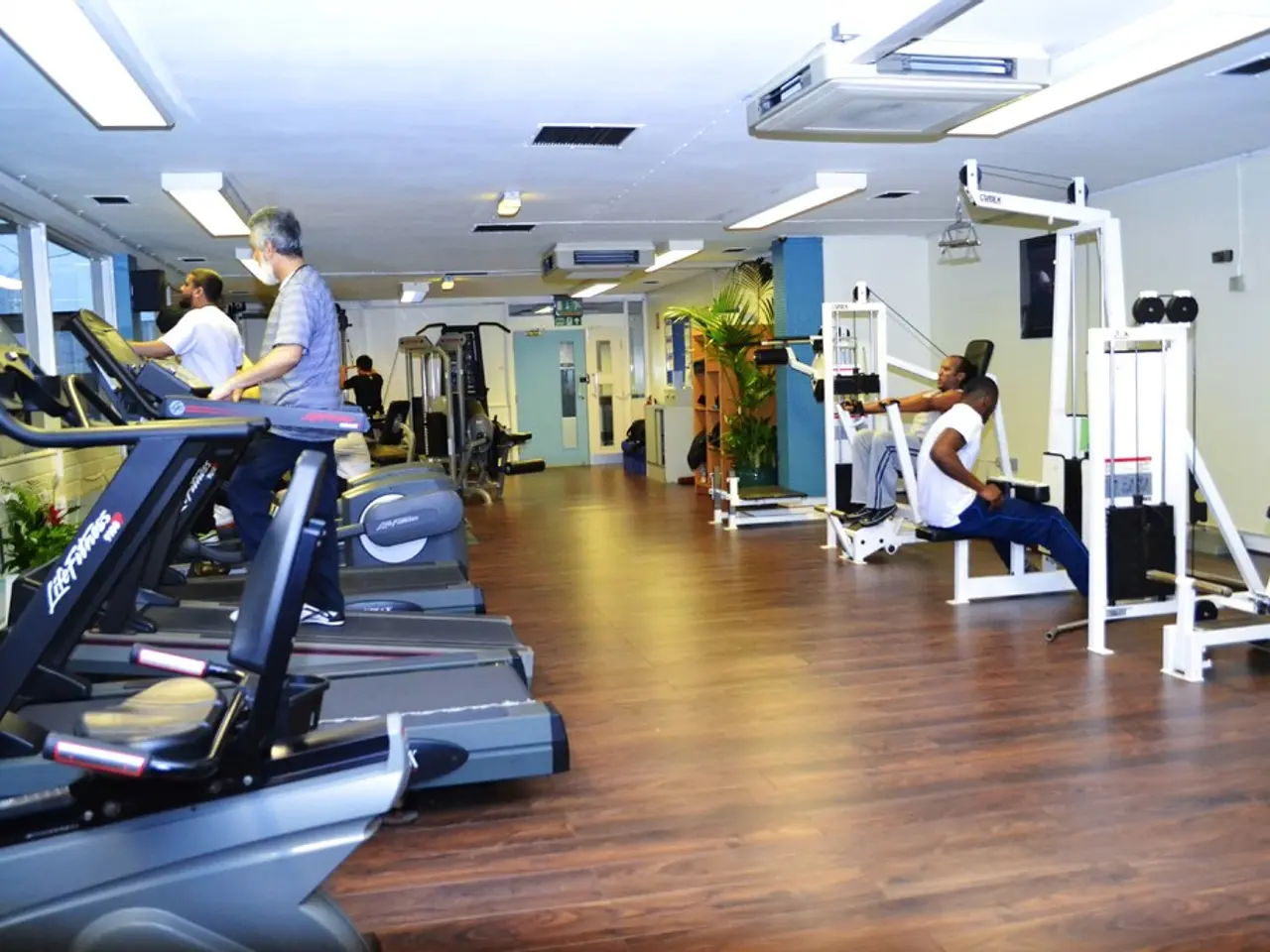Future in Fitness Lies in Asymmetrical Workouts: Explanation of the Benefits of Asymmetrical Training in the Field of Physical Fitness
Asymmetrical training, a training approach that involves exercises that create imbalances or asymmetrical movement patterns, is gaining popularity among fitness enthusiasts and athletes alike. This style of training offers numerous benefits over traditional symmetrical training, enhancing athletic performance and reducing injury risk.
Improvements in Athletic Performance
- Enhanced Core Stability and Balance: Asymmetrical training, such as single-leg or single-arm exercises, demands greater core stability and balance. This type of training helps athletes develop the strength and coordination needed to perform complex movements effectively, crucial for maintaining posture and generating force during sports activities [5].
- Increased Functional Strength: Asymmetrical exercises often engage multiple muscle groups simultaneously, mimicking real-world movements. This can lead to functional strength improvements, which are beneficial for athletes who need to perform a variety of tasks on the field [2].
- Better Neuromuscular Coordination: Asymmetrical training challenges the neuromuscular system to adapt to different movement patterns, enhancing coordination and reducing asymmetries that can lead to poor movement patterns [3][4].
Reduction in Injury Risk
- Addressing Muscle Imbalances: Asymmetrical training can help identify and correct muscle imbalances. By strengthening weaker muscle groups and improving movement patterns, athletes can reduce the risk of injuries associated with overuse or poor mechanics [2].
- Improved Proprioception: Asymmetrical exercises enhance proprioception, which is the ability of the body to sense its position and movement. This improved proprioception helps athletes maintain proper alignment and movement, reducing the stress on joints and lowering injury risk [3][4].
- Enhanced Resilience: By preparing the body for a variety of movement patterns, asymmetrical training can increase resilience against unexpected movements or changes in direction during sports, further reducing injury risk [5].
In summary, asymmetrical training offers benefits over symmetrical training by enhancing core stability, functional strength, and neuromuscular coordination while addressing muscle imbalances and improving proprioception. These improvements can lead to better athletic performance and a reduced risk of injury.
Experts recognize the critical role asymmetry plays in real-world movement, as human bodies and movement patterns are rarely perfectly symmetrical. Muscle imbalances are natural and can reinforce poor movement patterns if both sides are trained equally without addressing these imbalances. Real-world movements are asymmetrical, and training exclusively symmetrical lifts may fail to prepare athletes or individuals for functional demands.
Asymmetrical training is beneficial for everyone, from desk workers to weekend warriors, as the body's natural asymmetries affect all movement. This training corrects muscular imbalances, enhances core stability, mimics functional, real-world movements, boosts athletic performance, and improves joint health and injury prevention. Unequal loading forces in asymmetrical training encourage joint stability by strengthening connective tissues and improving range of motion control. Isometric anti-rotation holds, such as the Pallof press, reinforce deep core musculature engagement and posture control.
Read also:
- Digestive issues: Understanding causes, remedies, and further details about acid reflux and excessive burping
- Exploring Botox as a Treatment for Interstitial Cystitis: Insights, Adverse Effects, and Further Details
- Linking brain weakness and cognitive decline: An examination of the potential relationship
- Is it Possible that Stem Cells Improve Joint Durability and Mobility during Senior Years?





